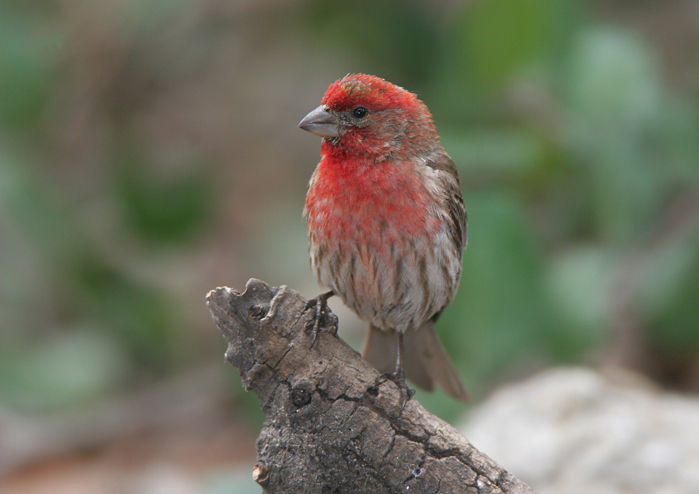
Location: Point Loma, CA
Date: 2007-06-02
Lens: Canon 600mm IS F4 + 1.4x II Converter

 House Finch
Carpodacus mexicanus
House Finch
Carpodacus mexicanus
 Description
Description
The amount and deepness of the red that appears on the males is dependent on the amount of carotenoid pigments in the bird's food during molting. The color may vary from pale yellow to deep red. Studies have shown that females prefer males with the brightest and reddist color, as this may be an indication of the bird's health. These birds feed on seeds and fruits.
The eastern populations of this bird are descendents from illegally caged birds that were released on Long Island, NY in 1940. From Long Island the released birds spread out in all directions and now poplulate most of the eastern US. It is interesting to note that the eastern birds have developed migratory behavior, which doesn't exist in the western birds. The birds in the Great Lakes area head south for the winter.
Known as the "papaya bird" in Hawaii, this bird was introduced sometime before 1870. Here the male lacks the red color, which is a result of the bird's diet. Because of this, they were once thought to be a separate species.
General: 5.5 inches in length.
Male: Brown upperparts and midcrown. Whitish belly and sides streaked with brown. Two pale wing bars. Red throat, chest, rump, and eyebrow. Grayish-brown bill. Female: Dull brown upperparts and head. Dusky underparts with brown streaks. Grayish-brown bill.
Parks, backyards, chaparral, open coniferous forests, cities, and deserts. Basically, almost everwhere.
 Nesting
Nesting3-5 bluish eggs marked with streaks or spots and a 12-14 day incubation period. Fledging occurs 11-19 days after hatching. The nest is a small, woven open cup built in a bush, thicket, natural cavity, or on a building. 2-4 broods are raised in one year.